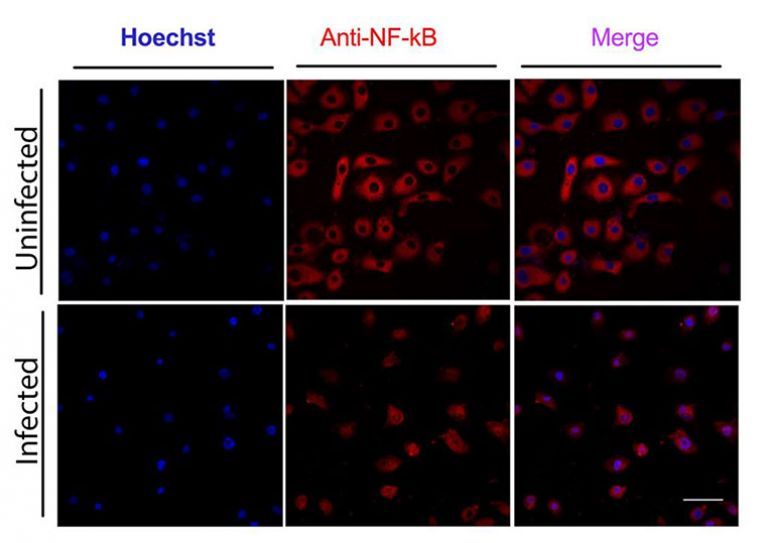Breadcrumb
Chlamydia pneumoniae is present in the dental plaque of periodontitis patients and stimulates an inflammatory response in gingival epithelial cells
What is it?
C. pneumoniae is a bacterium that causes respiratory infections including one out of ten cases of community-acquired pneumonia. It has also been linked to many other conditions including circulatory disorders, multiple sclerosis and Alzheimer’s. However, it was not previously thought to infect oral cells. This research examines whether C. pneumoniae is present in dental plaque, whether it has the potential to infect oral epithelial cells, and the outcome of infection.
What problem does it aim to solve?
The goal is to understand the role of C. pneumoniae in the mouth and how it may contribute to inflammation and periodontal disease.
How does it work?
Samples were taken from people with and without periodontal disease and analyzed. Researchers also investigated a mechanism that could explain how C. pneumoniae could contribute to inflammation and periodontitis. The key findings were that 1) C. pneumoniae is found more often in dental plaque from patients with periodontal disease than in the plaque of people with healthy mouths; and 2) the bacterium infects human gingival epithelial cells in vitro and can stimulate initiation of inflammation.
What are the real-world implications?
This research has identified a previously unrecognized potential contributor to periodontal disease, one that is already known to have other negative impacts on health. The research results also suggest mechanisms by which the bacterium could contribute to gum disease.
What are the next steps?
More research should be done to learn how pathogenic micro-organisms interact in the mouth, as well as about C. pneumoniae’s role in oral health problems and systemic diseases. Such research could lead to strategies for both treatment and prevention of oral and lung disease.
Source
"Chlamydia pneumoniae is present in the dental plaque of periodontitis patients and stimulates an inflammatory response in gingival epithelial cells" (2019), Microbial Cell, Vol. 6, pp. 197 - 208; doi: 10.15698/mic2019.04.674
Authors
Cássio Luiz Coutinho Almeida-da-Silva, Department of Biomedical Sciences, Arthur A. Dugoni School of Dentistry
Tamer Alpagot, Department of Periodontics, Arthur A. Dugoni School of Dentistry
Ye Zhu, Department of Biomedical Sciences, Arthur A. Dugoni School of Dentistry
Sonho Sierra Lee, College of Letters and Science, University of California, Berkeley; and DDS Program, Arthur A. Dugoni School of Dentistry
Brian P. Roberts, College of Letters and Science, University of California, Los Angeles
Shu-Chen Hung, Department of Biomedical Sciences, Arthur A. Dugoni School of Dentistry
Norina Tang, Department of Biomedical Sciences and Department of Periodontics, Arthur A. Dugoni School of Dentistry
David M. Ojcius, Department of Biomedical Sciences, Arthur A. Dugoni School of Dentistry






